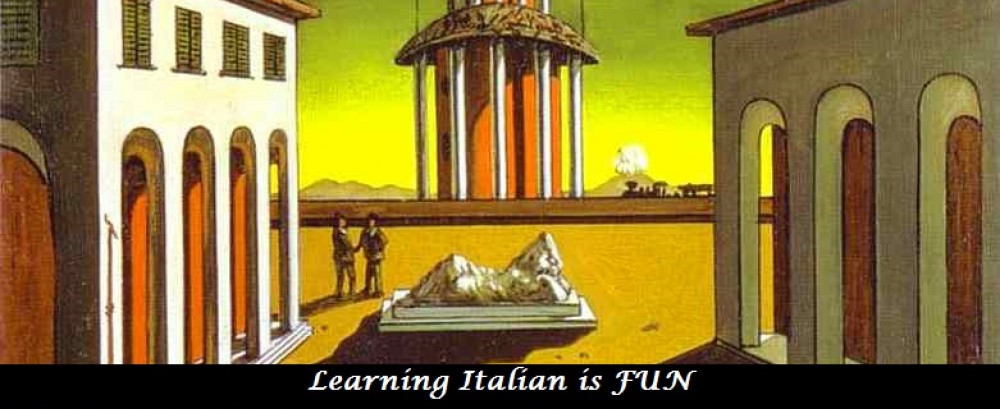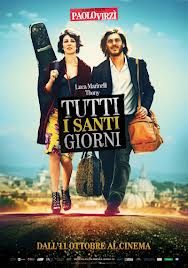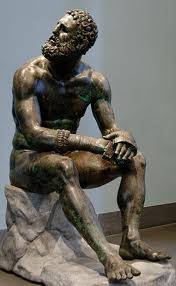Italian Futurists come to New York
February 21–September 1, 2014 (Guggenheim Museum)
Click here and here for more infos.

What is it? Fluency in a foreign language! Click here to learn why it is always a great investment!
Please click here:
10 Essential Food Rules for Americans in Italy
The Verdi Requiem will be streamed live on October 10, 2013. Tonight! At 8:30 PM ET, Watch Live: Verdi’s Requiem With The Chicago Symphony, Riccardo Muti conductor, please check here
http://www.youtube.com/watch?v=zq1oPgWECuk
Nanotechnology and Sustainability: New Research in Italy and the United States Wednesday, October 2, 2013 – 2:00pm – 6:00pm
The Italian Academy 1161 Amsterdam Avenue (between 116th and 118th Streets) New York, NY 10027
Leonardo Da Vinci’s Studies on the Science of Flight come to the Air and Space Museum, DC, September 13th to October 22ns 2013:
http://www.youtube.com/watch?v=hbRKAVZBlRc
Here are some that I found surfing the web:
1. Why do you think Mozart composed most of his operas in Italian rather than in German?
2. According to UNESCO (the cultural and educational agency for the United Nations) the most of the world’s cultural heritage sites are in Italy.
3. Italy is one of the top economies in the world, and many employers are seeking people who speak both Italian and English. An estimated 7,500 American companies do business with Italy and more than 1,000 U.S. firms have offices in Italy, including Chrysler, IBM, General Electric, Motorola, Citibank. Many Italian firms have offices in the U.S.
4. If you like arts, music, design, architecture, opera, food, etc. this is the reference language. Knowing Italian is greatly beneficial in several career fields. Italy is a world leader in the culinary arts, interior design, fashion, graphic design, furniture design, machine tool manufacturing, robotics, electromechanical machinery, shipbuilding, space engineering, construction machinery, and transportation equipment
5. The Italian language is the closest to Latin, the common ancestor of all romance languages.
6. Italian developed from Latin and an estimated 60 percent of the English vocabulary also comes from Latin. Knowing Italian may help improve your scores in English.
7. No need of subtitles to see Fellini’s, Visconti’s and Pasolini’s movies!
8. A recent study showed that enrollment in Italian language classes at U.S. high schools and colleges is growing 15 to 20% faster than enrollment rates for Spanish, German and French.
9. Italian is recognized as one of the most beautiful spoken languages on the planet
10. Italian has the highest number of words for describing food!
🙂
Students, what are your reasons?
Allegretto Made in Italy: the soundtrack of the Year of Italian Culture in the USA by Maestro Nicola Piovani and the Orchestra Italiana del Cinema:
Please click here for a list of events for 2013 Year of Italian Culture in the United States
ANICA and AIE, with the support of the Ministry for Economic Development, bring “Words on Screen – New Italian Literature into Film” to New York, to promote Italian film production and publishing industries. The guests of the initiative include director Salvatore Mereu and writers Nicolai Lilin and Simone Lenzi
June 3 – 4, 2013, New York, Casa Italiana Zerilli Marimò

Please click here for a list of events for 2013 Year of Italian Culture in the United States
“One word, spectacular. The Boxer at Rest, on loan from the National Museum of Rome, will be unveiled in the United States for the first time at the Metropolitan Museum of Art in New York this June 1 and remain on exhibit through July 15, 2013 as part of the Year of Italian Culture in the United States” from HuffPost Art and Culture.

Class 1027, Spring 2013.
BRAVI!!
https://www.youtube.com/watch?v=NyqV8gCrvp0
http://www.youtube.com/watch?v=W61D3U1U65U
Classi 102, Spring 2013!
http://www.youtube.com/watch?v=vjO_3ePQVFI
April 25th: LIBERATION DAY – Festa della Liberazione.
The song “Bella ciao” was sung by the anti-fascist resistance movement active in Italy between 1943 and 1945.
Italian version/ versione italiana:
Spanish version:
http://www.youtube.com/watch?v=2-1P68DlVZo
Japanese version:
English version:
http://www.youtube.com/watch?v=-t6ltrai1aE
« Una mattina mi son svegliato,
o bella, ciao! bella, ciao! bella, ciao, ciao, ciao!
Una mattina mi son svegliato
e ho trovato l’invasor.
O partigiano, portami via,
o bella, ciao! bella, ciao! bella, ciao, ciao, ciao!
O partigiano, portami via,
ché mi sento di morir.
E se io muoio da partigiano,
o bella, ciao! bella, ciao! bella, ciao, ciao, ciao!
E se io muoio da partigiano,
tu mi devi seppellir.
E seppellire (Mi porterai) lassù in (sulla) montagna,
o bella, ciao! bella, ciao! bella, ciao, ciao, ciao!
E seppellire (Mi porterai) lassù in (sulla) montagna
sotto l’ombra di un bel fior.
E (Tutte) le genti che passeranno
o bella, ciao! bella, ciao! bella, ciao, ciao, ciao!
E (Tutte) le genti che passeranno
Mi diranno «Che bel fior!»
«È questo il fiore del partigiano»,
o bella, ciao! bella, ciao! bella, ciao, ciao, ciao!
«È questo il fiore del partigiano
morto per la libertà!» »